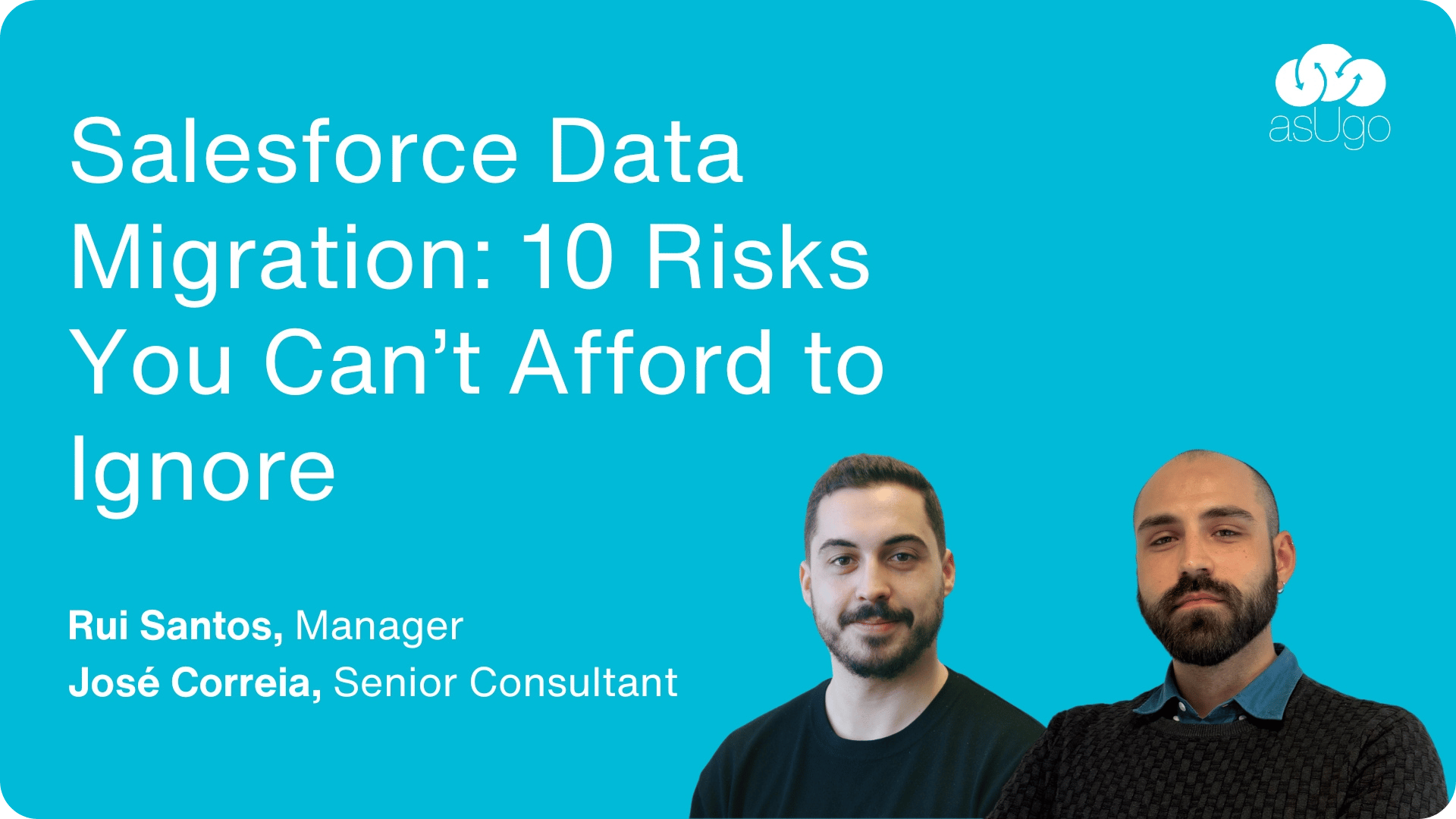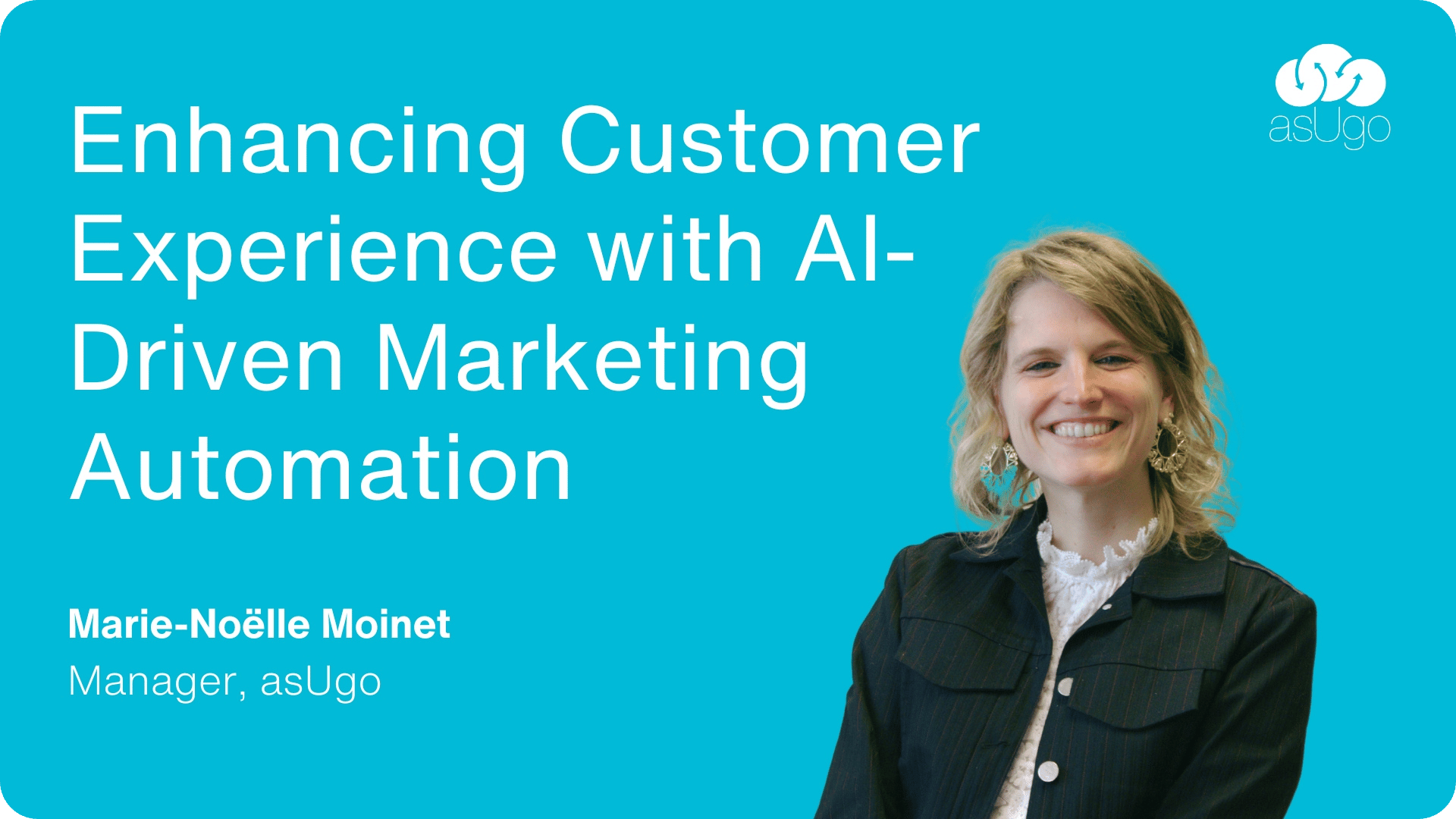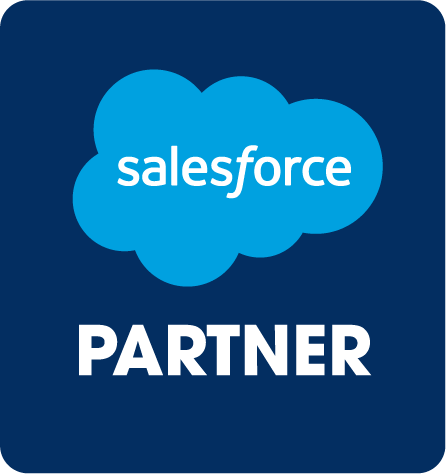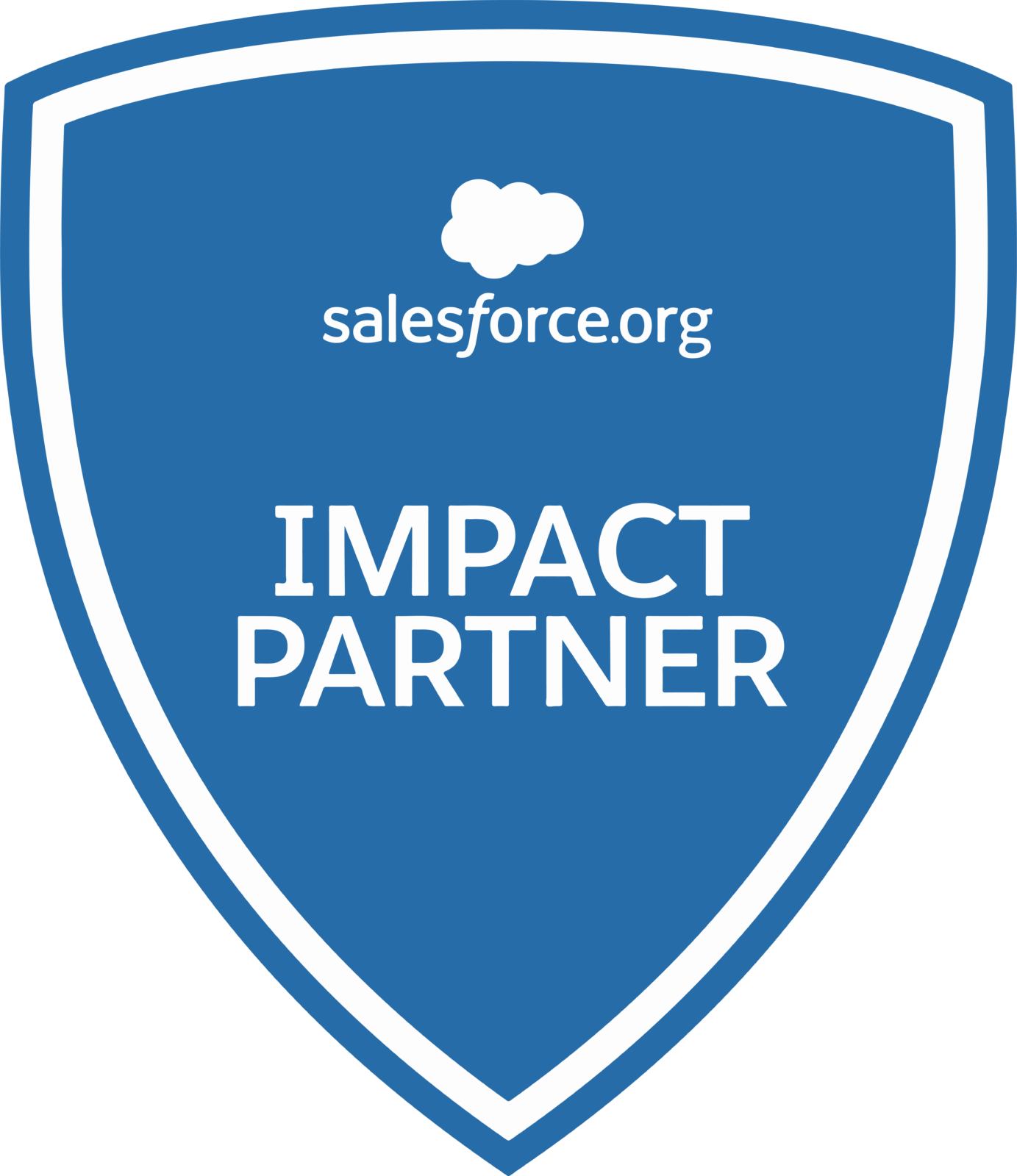
Human & Robot: A New Dynamics of workplace collaboration
In the reflection process on how to become a “data augmented” organization, special attention should be given to the human side of this change and how organizations can help individuals to adopt disruptive AI solutions and collaborate with robots. Artificial intelligence (AI) offers a tremendous opportunity to enhance efficiency, profitability, and innovation. However, AI adoption can be disruptive, especially when employees fear job displacement or lack the necessary skills to adapt to new roles and tasks. Addressing these concerns is essential for a smooth transition.
Following the ADKAR framework, Agentforce implementation projects show new challenges in change management. These new challenges include additional difficulties in terms of profitability projections and setting goals for the sponsor, and the definition of the WIIFM (What’s In It For Me?) principle (assist human capabilities or automate and optimize processes for team leaders), but also the management of resistances when change can present new opportunities for some, such as new roles, or threats to others, such as job displacement. When launching AI initiatives in line with the company mission and vision, organizations become responsible for creating a coalition around the initiative and its main strategic objectives, favour the culture of change, provide the right tools and related trainings, involve stakeholders and remove resistance.
Nowadays, the understanding of AI challenges and impact is low, leading to disengagement and resistances. At asUgo, we practice the ADKAR model as part of our approach to managing organizational change. By focusing on Awareness, Desire, Knowledge, Ability, and Reinforcement, the ADKAR model helps us support our clients and employees through AI transformations. This framework is instrumental in addressing human concerns, reducing resistance, and ensuring long-term success.
The Impact of AI on Organizations
According to Prosci 60% of the 679 respondents across industries said they expected significant disruption by generative AI. The most impacted industries were forecasted to be fintech, technology, banking, software and IT. Industries like banking, insurance, software and capital markets have the highest risk of disruption. Sectors such as natural resources, chemicals, and consumer goods and services face less risk. AI impacts organizations in multiple ways, from enhancing decision-making and profitability at the executive level to altering daily workflows at the user level: efficiency of management processes, operational performance, job disruption, task disruptions,…Research indicates that AI could contribute up to $13 trillion to the global economy by 2030, highlighting its potential to reshape industries. GenAI can allow companies to ease daily work and achieve a competitive edge. For organizations, AI presents an opportunity to optimize key performance indicators (KPIs), improve cost structures, and enhance customer satisfaction.
However, AI also brings challenges. Employees may fear job losses, especially those in roles susceptible to automation. The report highlights that AI could displace 85 million jobs by 2025 (World Economic Forum. “The Future of Jobs Report 2020.” WeForum.org.) but create 97 million new roles in fields like data analysis, AI development, and process management. For some, AI represents a career opportunity, while for others, it may feel like a threat.
The Prosci AI Workflow Integration Framework classifies tasks into three categories, highlighting the specific roles AI can play in automating and optimizing workflows:
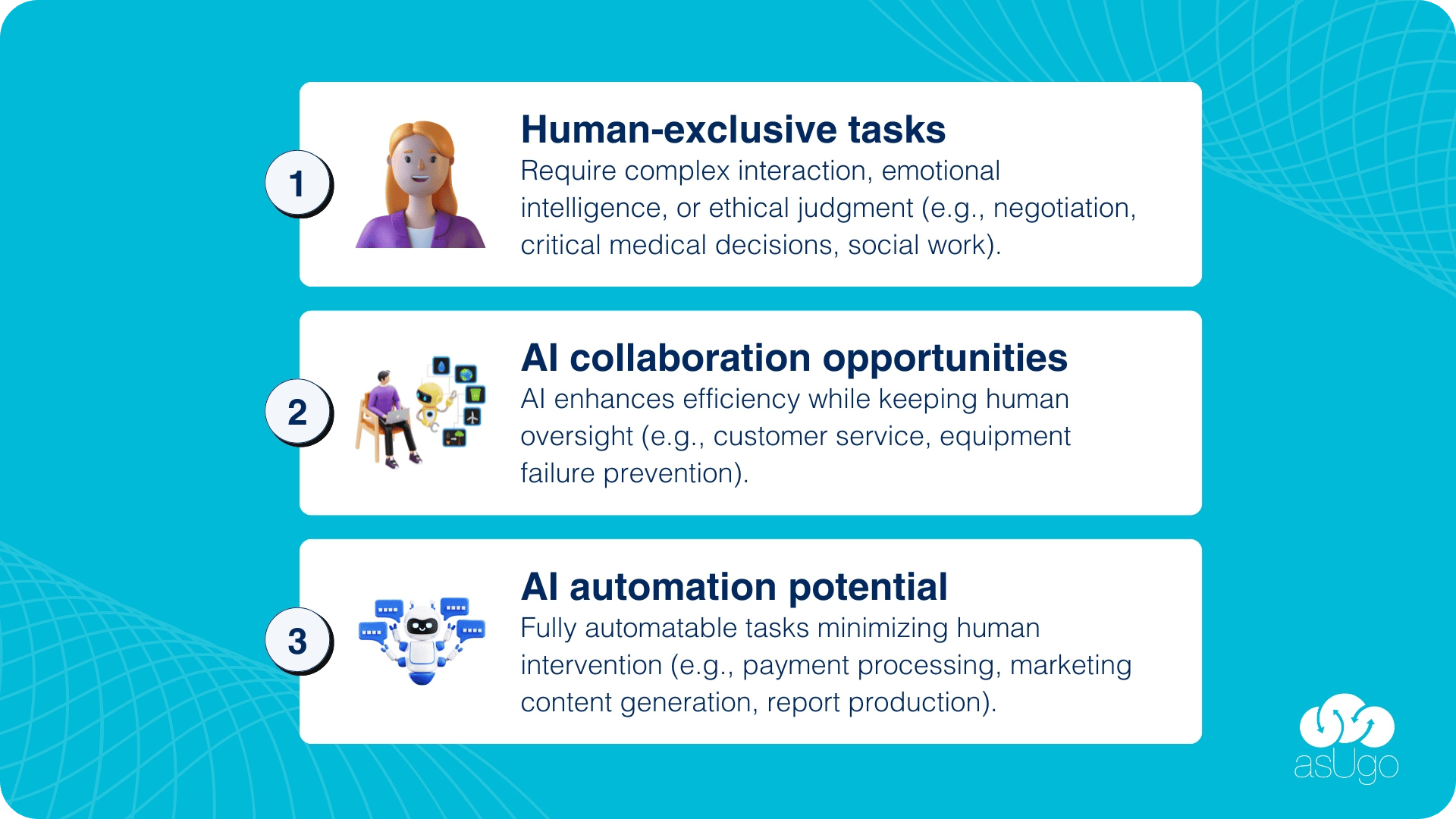
How the ADKAR Model could support AI adoption
According to the Prosci AI and Change Management study, professionals face challenges in grasping AI, managing its use, and keeping up with how quickly change management practices need to evolve: Fear and lack of understanding (29%), governance and compliance to legal and ethical concerns (22%), adaptation to AI highlights (16%), security and privacy concerns (13%), human aspects and job displacement (13%). The first ADKAR barrier to focus on in most cases remains Awareness.

At asUgo, we integrate the ADKAR model to guide AI initiatives and ensure they align with the human side of change. Applying structured change management approaches equips leaders to understand and manage the impact of change on all stakeholders while mitigating risks and ensuring return on investment (ROI). The model helps us focus on individuals and their journey through the transformation process.
Before any AI initiative, together with the sponsor, we create awareness around the need for change, linking it to the company’s goals, such as improving operational efficiency, driving innovation or optimizing customer experience. The demonstration of a strong sponsorship is key. Clear messaging, unified vision and reassurance help employees understand why AI is necessary and how it aligns with the organization’s long-term strategy and goals (success of the initiative must be measurable and risks should be considered). Lack of understanding (34%) and fear (25%) are the two main restraining forces to reach AI awareness.
Following the ADKAR framework, we emphasize the importance of building a strong coalition around AI initiatives. Successful AI adoption requires engagement across multiple departments, including leadership, HR, IT, and operations. A coalition of key stakeholders ensures that the organization moves forward in alignment, reducing friction and increasing support for the change process.
Promoting a culture of change is key. Organizations must foster a culture that embraces innovation and is open to new ways of working. At asUgo, we encourage transparency, continuous communication, and collaboration to ensure everyone in the organization feels included in the AI journey. This approach helps reduce resistance and fosters a positive outlook on AI-driven transformation. At this stage, barriers to adopt AI and ways to address resistance should be anticipated.
GenAI is not only a way to reduce costs, but other benefits should be emphasized to foster user engagement. Beyond awareness, generating a desire to support AI adoption is crucial. We focus on the WIIFM principle. Employees need to see how AI will impact them, what is the nature of change (process, role, solution,…) and how AI can benefit their team and them personally, whether through enhancing their productivity, reducing mundane tasks, or offering new career paths. Tailored communication and content that addresses specific teams concerns is key to building desire across different employee groups.
Research indicates that, 46% of organizations experience significant resistance when adopting new technologies. Overcoming resistances requires a holistic approach that involves all impacted stakeholders. Engaging cross-departmental leaders and superusers are key strategies. Phasing also allows employees to adapt to changes gradually, reducing anxiety and encouraging active participation.
According to Prosci when the WIIFM is clearly communicated, 61% of respondents believe projects will be more successful, 65% agree they will be more successful and 73% say their organization will be more successful.
Don’t assume that most employee “play with AI”. Some can become superusers but others lack time, energy and skills to discover AI by themselves (PROSCI).
Successful AI adoption depends on employees acquiring the right knowledge and skills. At asUgo, we provide comprehensive training programs designed to enhance AI-related skills and digital literacy. According to a study, companies that invest in employee training see a 37% increase in technology adoption. Our tailored learning sessions and material ensure that each employee feels equipped to work with AI tools effectively.
Clear and consistent communication is also at the heart of successful AI adoption. Leadership must provide continuous updates on the project’s timelines, milestones and status. Providing ongoing support through training, feedback loops, and open forums for discussion ensures that employees feel empowered throughout the transformation process.
With knowledge comes the need for practical application. We ensure that employees have the tools, support, and resources necessary to implement AI solutions in their daily tasks. Our team provides ongoing coaching and assistance to bridge the gap between theoretical knowledge and practical ability, enabling employees to successfully integrate AI into their workflows.
Reinforcement is critical for sustained change. Continuous feedback, recognition, and incentives encourage employees to maintain their commitment to AI transformation. Superusers empowerment and advanced training allows knowledge transmission to existing and new colleagues. This phase ensures that AI integration becomes an enduring part of the organizational culture. We also focus on celebrating early successes and highlighting the long-term benefits of AI adoption.
Conclusion
The journey towards becoming a data-augmented organization is as much about managing people as it is about adopting technology. At asUgo, we rely on the ADKAR model to guide our approach, ensuring that AI adoption is smooth, structured, and human-centric. Experts agree that a phased and targeted approach should be preferred, prioritizing the most prevalent use cases, such as enterprise search/knowledge mining and virtual agents, as these evidently already deliver real value to users. By focusing on Awareness, Desire, Knowledge, Ability, and Reinforcement, we help our clients not only to understand AI but to utilize it to the fullest. Successful AI adoption hinges on recognizing and addressing the human side of change, in a phased and targeted approach to rolling out, and with the right tools and mindset, organizations can unlock the full potential of AI.
Author: Céline Brandt, Senior Manager, asUgo

